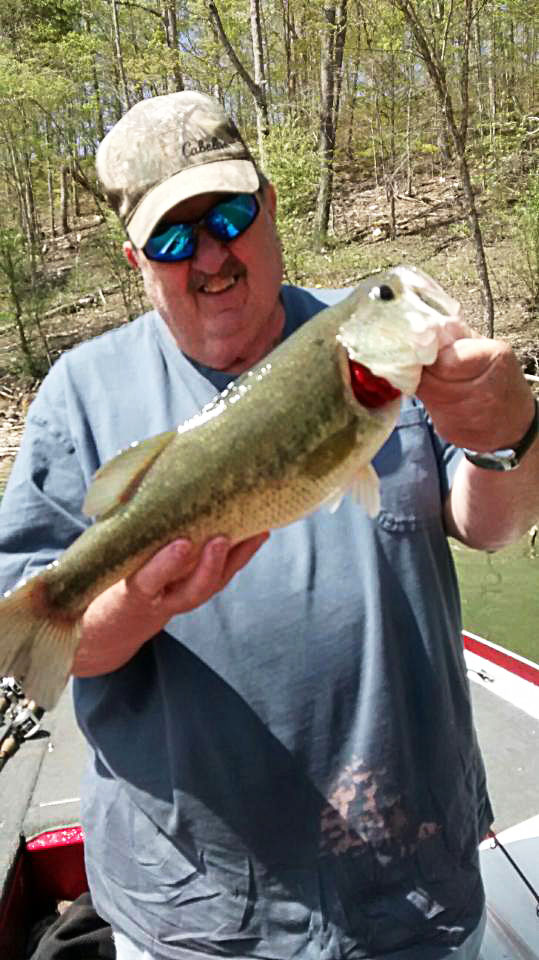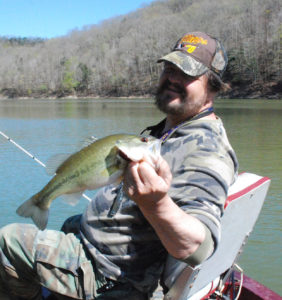By Chris Erwin
I had all intentions of posting this article last week; however, because of the death of my father I elected to write about him. That said, the progression of the spring spawns is becoming a reality in all our lakes. The one exception may be the Ohio River; I haven’t got a report on the river in a few weeks.
We are still getting reports of female bass being caught in shallow water, which suggests that they may not be deep in the nesting process. Once they lay their eggs we should start getting reports of buck bass being caught defending the nest as the female bass move off and stage on the first or second break.

From the letters I get from readers, we have a number of new anglers trying to learn this sport. While many of you have been sport fishing for many years I try to bring everyone along and write useful information for experienced anglers. The idea is to help anglers prepare for the fishing conditions they face from week to week.
So while some of this may be old news for some, it will help build others on the basic knowledge needed to put together patterns. It is intended to help you adjust according to what you face on any given day.
When water temperatures reach the mid-60s bass will begin their migration to shallow water. We have already seen this.
They begin by feeding on crawfish and other bait related to the bank such as mating frogs, washed in worms, and falling worms like bagworms. When the water holds in the 60s through the night, the females will begin to locate near nesting sites. The males will sweep out a nest and prepare it for mating.
When conditions are right, he will herd her to nest and circle her and even nudge her to begin dropping her eggs. These are the shallow areas where sunshine first increases the water temperature to a desirable spawning level. Such areas are located predominantly on the north shores of the lake where the seasonal low-angle un-shaded sun has a more prolonged warming effect.
Bass prefer hard-bottom areas with a thin layer of mud; old roadbeds or areas where vegetation provides roots are prime locations for nesting sites. I have also discovered that you will find many more nesting sites in protected coves than on the main body of any lake. I believe this is because of the reduced agitation from boat traffic and wind. This makes the nest more secure and at the same time provides better light penetration, which is needed for the eggs to hatch successfully.
While this process is a fairly short, it may last longer than you might think, because the female bass usually doesn’t lay all their eggs in one nest. The male (buck) bass cares for and protects the eggs until his hunger gets the best of him. Then he begins to feed on his own fry.
The female usually drops eggs in two to three nests and moves off where she stages until she is done laying. During this time, bass tends to take on spawning colors where they are brightly displaying their lateral lines.
I do not advocate catching bass while they are going through the nesting process. However, if you do, I would hope you release them in the area where they were caught. If they are absent for any length of time, bluegill and other predators will eat all the eggs before they have a chance to survive.
If you are learning this sport, it will serve you well to understand the life cycle of bass. This knowledge will serve you as they begin and end the mating season.
Once the nesting season is over, bass will begin the cruising behavior. When this happens, it’s time to use stick baits, flukes and even topwater baits. They become aggressive and while many baits will catch them, if you master the baits mentioned you will become better equipped to take advantage of the natural patterns that develop post-spawn.

I hope to cover this process this season and help anyone building on their spring fishing techniques. In the last week, we continue to get reports that the spring spawns are under way. I’m looking forward to exploring them together.
Chris Erwin is the Author of Camping Kentucky, founder and publisher of Kentucky Angling News an on-line magazine available at www.kentuckyangling.com/magazine Chris can be reached by email chris@ashlandbeacon.com


Be the first to comment